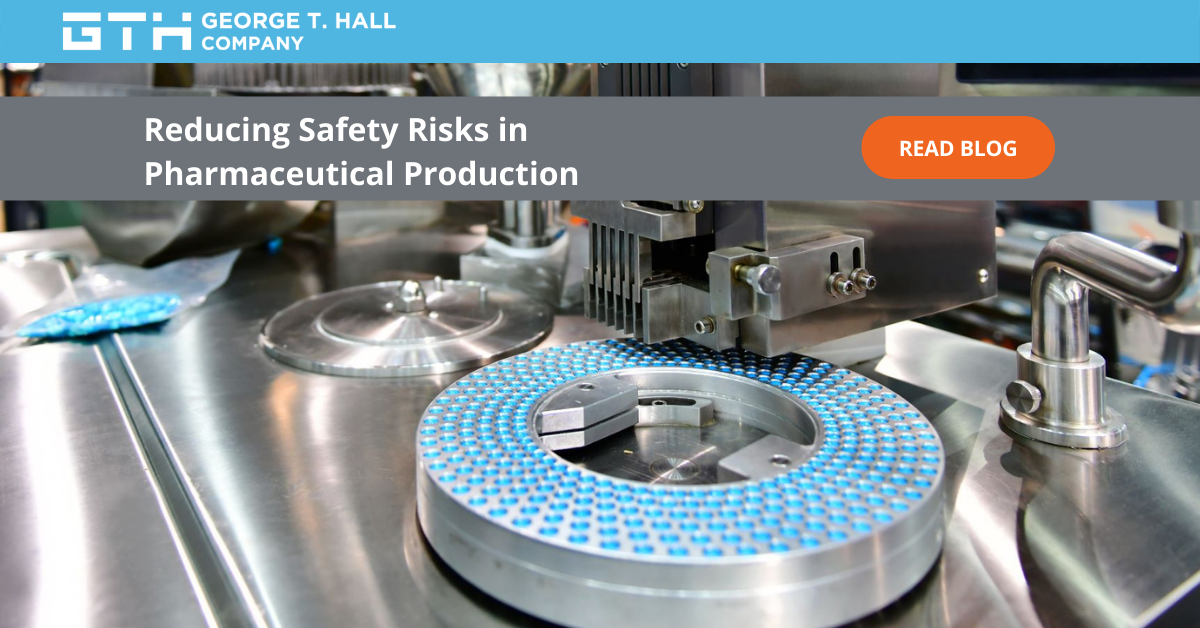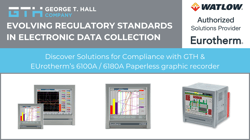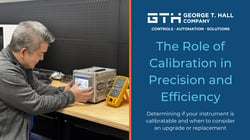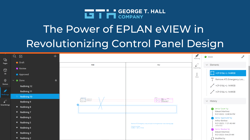Blog

Reducing Safety Risks in Pharmaceutical Production
When it comes to pharmaceutical production, manufacturers usually need to implement highly complex, multi-step processes to produce precise formulations of various chemical compounds. Some of the many steps required to produce a product may include mixing, wet and dry granulation, milling, and tablet coating and pressing. During these various phases, a variety of dry and liquid materials are needed and there are typically many chemical reactions that happen to ensure the right formulation and dosage is produced. Many of these raw materials, such as solvents, and chemical reactions can be hazardous to humans. Thus, if any part of the production process does not go exactly as planned, there can be dire consequences that may impact the safety of employees working in the production facility.
While the potential life safety risks involved in pharmaceutical production are well understood by manufacturers, it can be challenging for pharmaceutical facilities to know how to identify solutions that can monitor for the right factors and provide useful data that will help reduce risks and improve production safety. This is where George T. Hall can help. Based on our decades of experience working with numerous pharmaceutical companies, we have multiple proven recommendations for automated monitoring and control solutions that can help employees stay safe when working with these potentially hazardous materials.
Applying Proper Gas Detection Sensors Facility Wide
To start, we recommend identifying all the possible points throughout the production process where it is possible for hazardous materials, especially invisible gases, to leak from the system. In general, combustible gas sensors are recommended in any area where hazardous, flammable, or combustible solvents are used or stored and where a risk to life safety may occur.
When we engage with a production facility to perform this type of risk assessment, we typically work closely with our manufacturing partners, such as Honeywell Analytics, to identify these risks and the best possible solutions for monitoring these areas. Once these points are identified, we install sensors designed to monitor for the presence of harmful gas levels, which could include anything from leaking explosive gases or an unexpected oxygen level that may become dangerous. We then integrate the sensors with a gas monitoring system, ensuring the proper monitoring is in place. With this functionality, an audible and visual alarm can sound to alert anyone in the affected area that they need to evacuate until safe levels are detected.
Identifying Monitoring and Control System Irregularities
Another risk-reduction feature we recommend implementing is the development of control strategies designed to reduce the risk of spillage or the potential for the undetected release of gasses or chemicals. By having a thorough understanding of the end control devices used throughout the facility including valves, pumps, tanks, and e-stop switches, you can minimize the potential for hazardous conditions.
When this information is effectively integrated into a production SCADA system you can further reduce the potential for human safety issues by predicting events before they occur. For example, the system could automatically turn on exhaust fans to reduce the concentration of a hazardous gas that was released into the production space or pumps may be shut down when a high-level event occurs.
Proactive Gas Detection Can Save Lives
Accidental gas or chemical leaks during pharmaceutical production are a huge threat to human safety, the environment, and your production facility as a whole. To be sure you have the right proactive detection, monitoring and control methods in place in your facility, contact us today.
RELATED POSTS
Determining if your instrument is calibratable and when to consider an upgrade or replacement
In the rapidly evolving world of controls and automation, efficient design and manufacturing processes...




